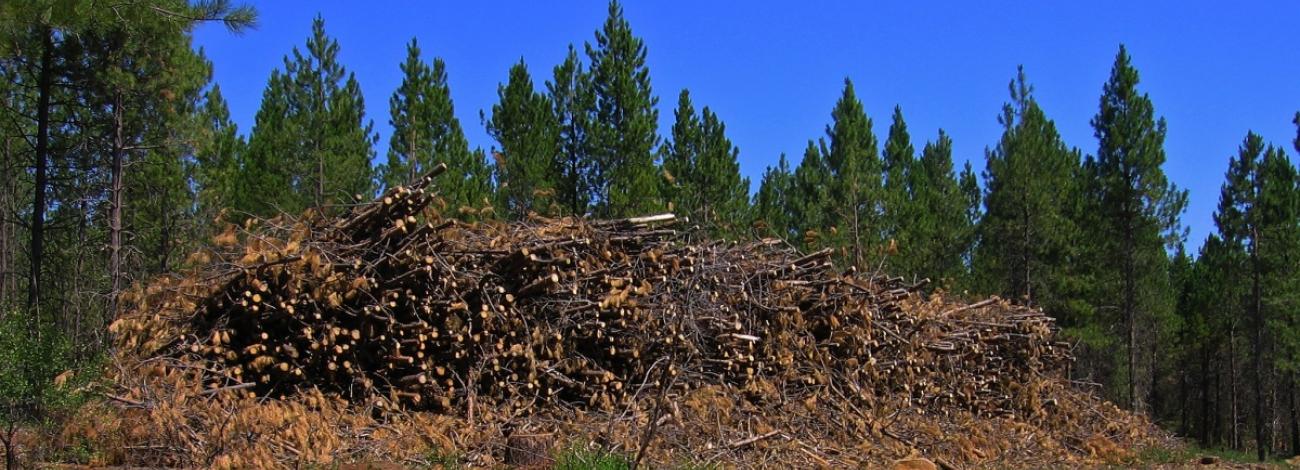
Tribal Biomass and Bioenergy
Background:
Section 202 of Public Law 115-325, the Indian Tribal Energy Development and Self-Determination Act Amendments of 2017 (the Act) amends the Tribal Forest Protection Act of 2004 (25 U.S.C. 3115a et seq.) for the purpose of establishing Tribal and Alaska Native biomass demonstration projects for federally recognized Indian tribes1 and Alaska Native corporations to promote biomass energy production, on Bureau of Land Management and Forest Service lands.
For Tribal Biomass Demonstration Projects, the Act requires, for each of fiscal years 2017 through 2021, the Secretary to enter into stewardship contracts or similar agreements (excluding direct service contracts) with Indian tribes to carry out at least four new demonstration projects to promote biomass energy production (including biofuel, heat, and electricity generation) on Indian forest land and in nearby communities by providing reliable supplies of woody biomass from Federal land.
For Alaska Native Biomass Demonstration Projects, the Act requires, for each of fiscal years 2017 through 2021, the Secretary to enter into an agreement or contract with an Indian tribe or a tribal organization to carry out at least one new demonstration project to promote biomass energy production (including biofuel, heat, and electricity generation) by providing reliable supplies of woody biomass from Federal land.
Eligibility:
To establish eligibility for a Tribal Biomass Demonstration Project, a federally recognized Indian Tribe needs to submit an application with the following information:
- A description of the Indian forest land under the jurisdiction of the Indian tribe,
- A description and location of the biomass utilization facility including its annual biomass consumption and details related to the application evaluation criteria,
- A map depicting the BLM lands being proposed for harvest, and
- A harvest plan proposing the means to carryout the biomass harvest.
To establish eligibility for an Alaska Native Biomass Demonstration Project, a federally recognized Indian Tribe needs to submit an application with the following information:
- A description and location of the biomass utilization facility including its annual biomass consumption and details related to the application evaluation criteria,
- A map depicting the BLM lands being proposed for harvest, and
- A harvest plan proposing the means to carryout the biomass harvest.
Application Evaluation Criteria:
In accordance with the Act, the BLM will evaluate applications by assessing whether the proposed project would:
- Increase the reliability of local or regional energy;
- Enhance the economic development of the Indian tribe;
- Result in or improve the connection of electric power transmission facilities serving the Indian tribe with other electric transmission facilities;
- Improve the forest health or watersheds of Federal land or Indian forest or rangeland; or
- Otherwise promote the use of woody biomass.
Contracts and Agreements Selection:
In accordance with the Act, the BLM will evaluate proposals to enter into a contract or agreement with the following considerations:
- The status of the Indian tribe as an Indian tribe;
- The trust status of the Indian forest land or rangeland of the Indian tribe;
- The cultural, traditional, and historical affiliation of the Indian tribe with the land subject to the proposal;
- The treaty rights or other reserved rights of the Indian tribe relating to the land subject to the proposal;
- The indigenous knowledge and skills of members of the Indian tribe;
- The features of the landscape of the land subject to the proposal, including watersheds and vegetation types;
- The working relationships between the Indian tribe and Federal agencies in coordinating activities affecting the land subject to the proposal; and
- The access by members of the Indian tribe to the land subject to the proposal.
Submitting an Application:
A federally recognized tribe may submit an application to the BLM field office that has jurisdiction over the land where the project would occur. The application should contain the information outlined in the eligibility section of this webpage.
1 Indian tribe means: “any Indian tribe, band, nation or other organized group or community, including any Alaska Native village or regional or village corporation as defined in or established pursuant to the Alaska Native Claims Settlement Act (85 Stat. 688), which is recognized as eligible for the special programs and services provided by the United States to Indians because of their status as Indians. 25 U.S.C. § 5304(e).
Additional Information for Contract or Agreement Development:
After the initial application to verify eligibility, the BLM will work with the tribe to obtain additional information necessary to develop the contract or agreement. The information may include, but not limited to:
- A description of the harvesting methods, annual harvest volume, silviculture prescription, and transportation routes;
- A start date and duration of source area usage; and
- Information relevant to analysis of the project under the National Environmental Policy Act (NEPA).
